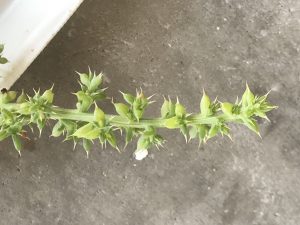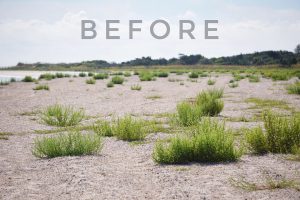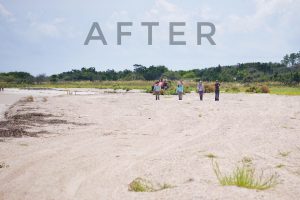When I hear the word tumbleweed, an image of a dry brittle plant tumbling across a barren road of an arid desert scene pops into my head. Not the image of a prickly plant patching across the beaches of Florida. The tumbleweed iconic to the West is referred to as prickly Russian thistle (Salsola kali). Our local beaches have a closely related subspecies of Russian thistle Salsola kali subspecies pontica. It is a non-native invasive plant that disturbs shorebird and sea turtle nesting habitat by taking over areas that are typically barren.

In Northeast Florida, Russian thistle has been identified in patches along the fore dunes of Amelia Island, Cumberland Island and Talbot islands. With no prior data collection, local agencies are determining just how prevalent it is among our dunes. If you’re walking along the beach look for oval to round shaped plants with sharp-pointed tips. When the weather becomes drier, Russian thistle will become brittle and break off, blowing across our beaches like a scene out of a wild West movie.
How to help
If you’ve spotted Russian thistle on the beach, take GPS points using your phone. Then take a few photos of the whole plant and a few close up photos of the leaves. Email your photos to, jdacey@ufl.edu

The UF/IFAS Extension and the City of Fernandina Beach have been pulling up this coastal invader. Therefore, we need your help. Join us in learning how to identify, report and remove Russian thistle from our pristine beaches. If you’d like to get further involved join our Facebook Group: UF/IFAS Coastal Invasive Species Removal.
If you’re unable to join, there are plenty of other ways you can help:
- Learn how to identify this plant – see Russian Thistle Factsheet
- If you identify this plant in a natural area, report it using the I’ve Got One app
- Get involved with Northeast Florida invasive removals through the First Coast Invasive Working Group (FCIWG)
- If in other areas of Florida, check out your local Florida Invasive Species Partnerships (FISP)
For further questions and to get involved with the local clean up dates, email Natural Resources and Agriculture Extension Agent Justina at jdacey@ufl.edu


Watch this video to see what Russian thistle looks like when it first pops up on the beach.
https://www.youtube.com/watch?v=qdNJGdRvePM&t=11s
Click here for more photos of Russian thistle.
 0
0
